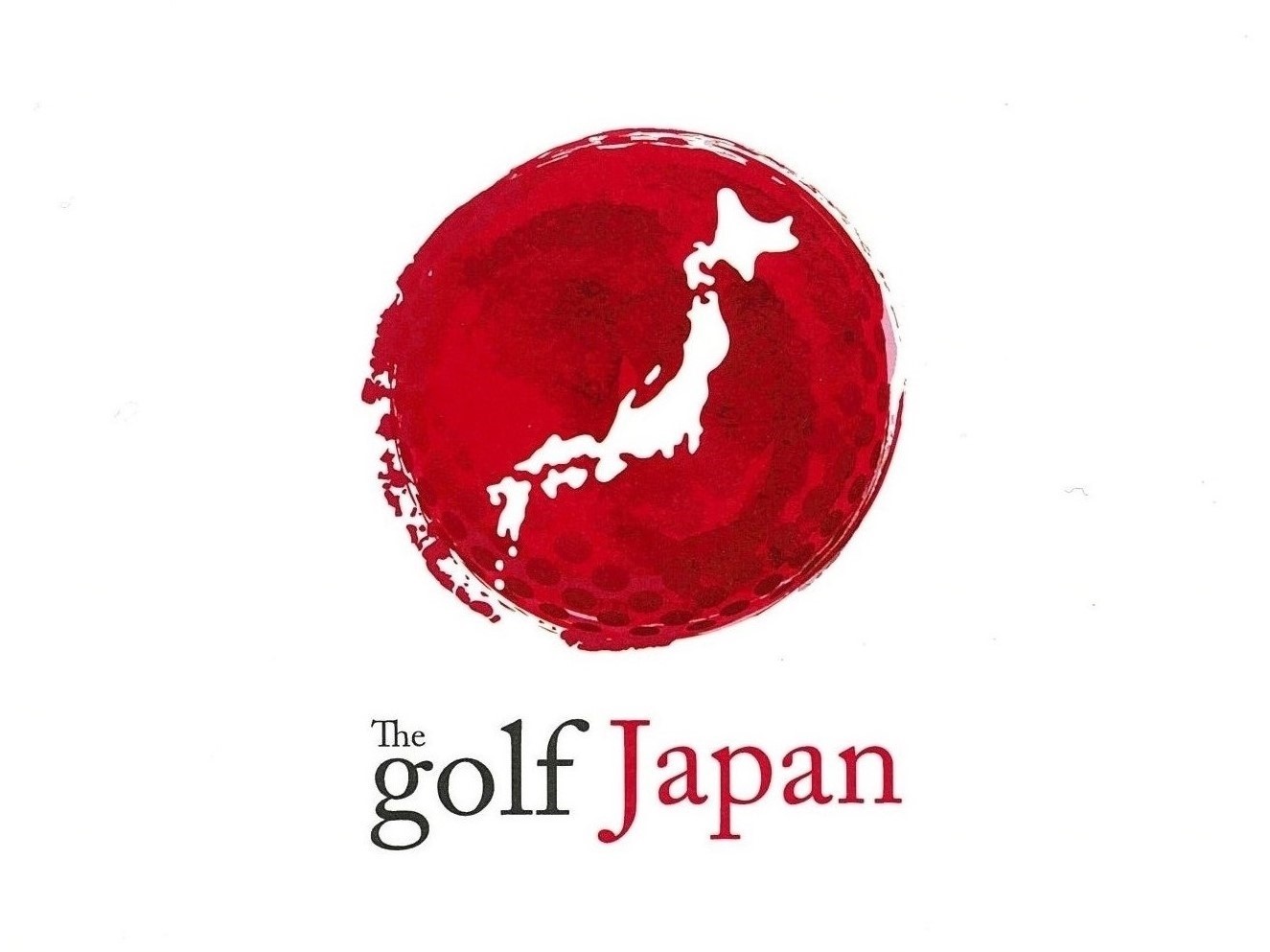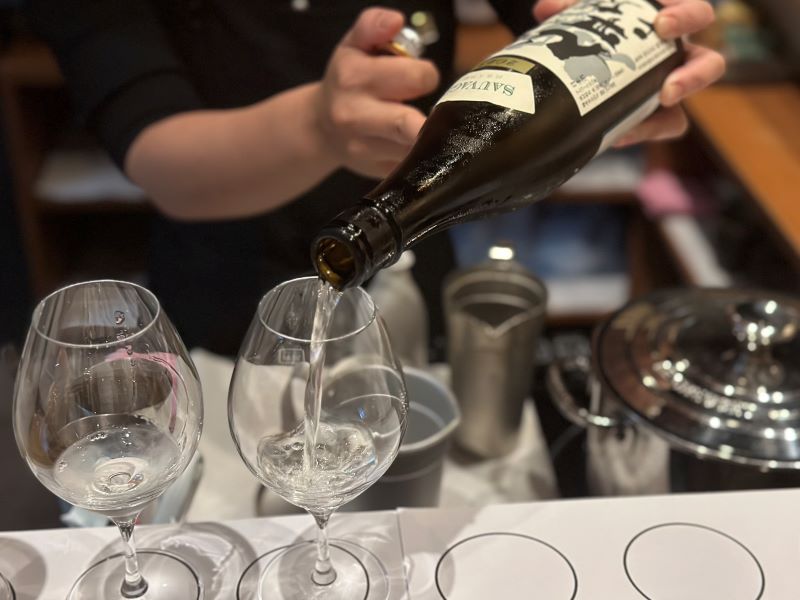The Golf Japan offers Private sake tasting sessions (Arrangements can only be made for customers traveling with us through a travel agency). This is a special experience where you can listen to a professional’s unique commentary and knowledge while drinking sake selected by a sake professional.
The content varies from each sake master, but this time we would like to introduce one of the experiences at “SAKE BAR Otonari” in Kagurazaka. This bar is located on the basement floor of a building and is a kind of hideout that is hard to get to if you don’t know about it.
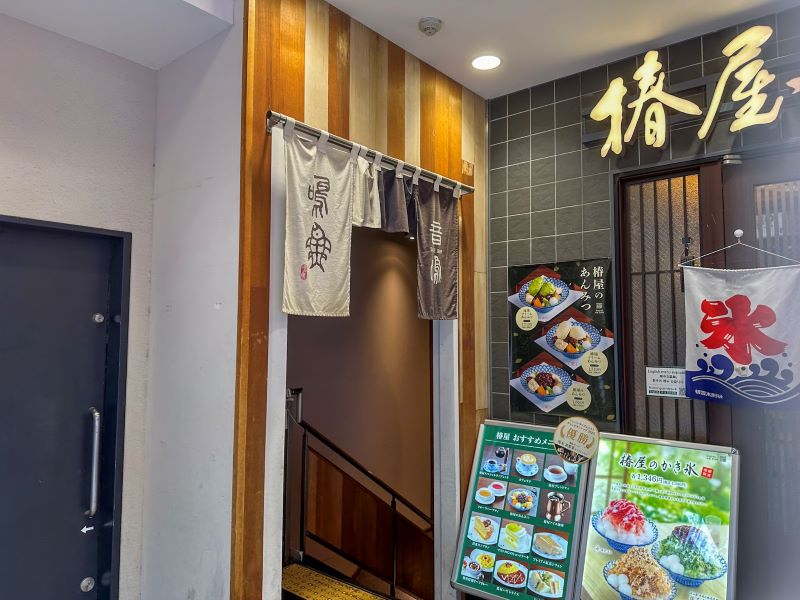
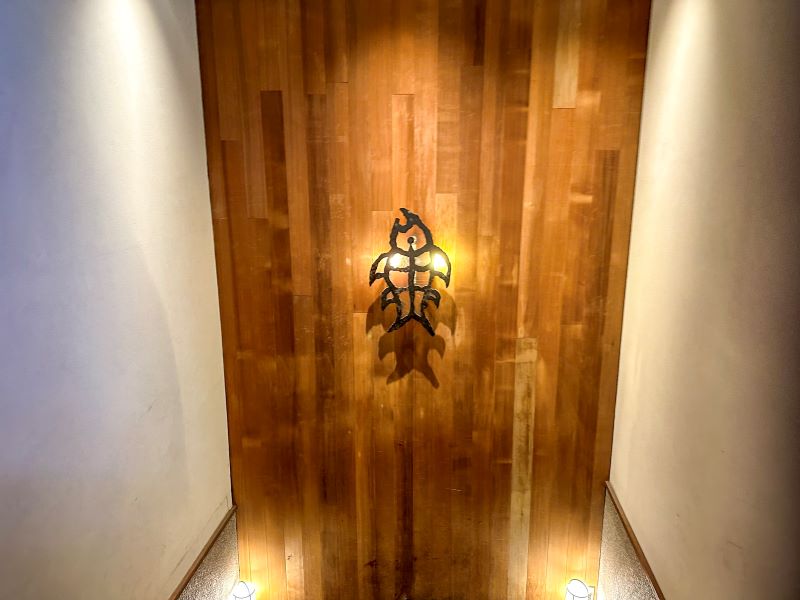
The cozy restaurant with U-shaped counter seating is decorated with hanging cedar balls, as is typical of a sake store, and the slightly dark lighting adds to the atmosphere. On the wall, you can see the signatures of sake breweries and sake brewers, which heightens your expectation that this is a store trusted by the sake brewers.
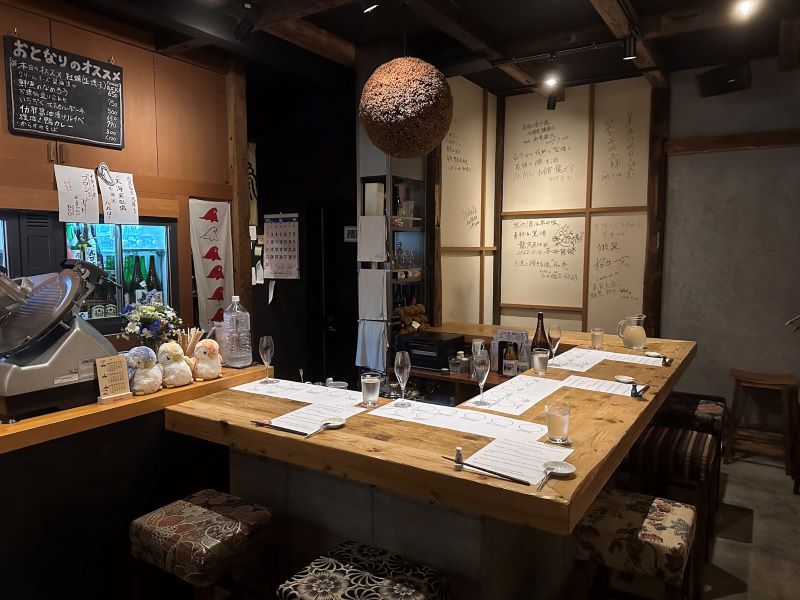
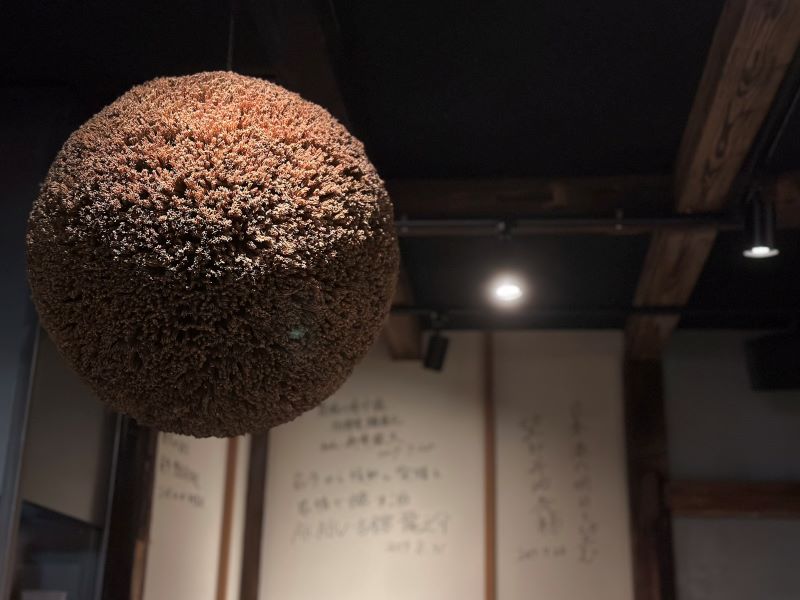
First of all, let me say that I am not at all familiar with sake. I rarely drink alcohol, and when I do, it is only a few times a month at home with a can of beer without any particular preference. Of course I have had sake before, but I have never found it particularly tasty, and I don’t have the knowledge or passion to order it myself. I was a bit nervous about whether I would be able to enjoy this session…but then the sake tasting session started.
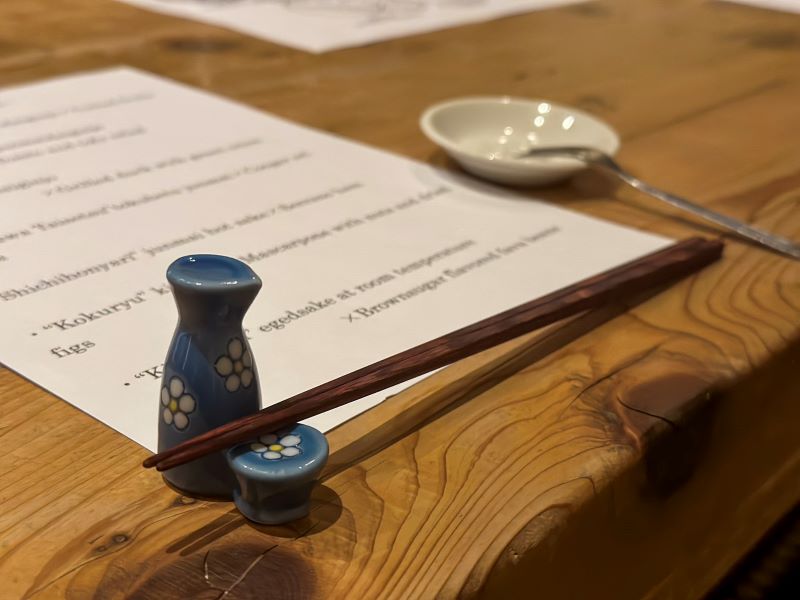
What is Sake?
Before I tell you about the session, let’s take a quick look at what sake is all about.
Sake is an alcoholic beverage made using a process unique to Japan. The main ingredients are rice, rice koji, and water.
Types of Sake
Sake can be broadly classified into the following two types
- Tokubetsu Meisho-shu (特定名称酒)
- Futsuu-shu (普通酒)
To qualify as Tokubetsu Meisho-shu (特定名称酒), the following specific requirements must be met
- No ingredients other than rice, rice koji, and brewing alcohol are used, and the amount of brewing alcohol used must be 10% or less of the weight of the white rice.
- Use of brown rice graded 3rd class or higher, or milled brown rice of equivalent quality.
- Rice koji must be used in at least 15% of the product.
Tokutei Meisho-shu is further classified into eight categories according to rice polishing ratio, whether or not brewing alcohol is added, and whether or not the sake is ginjo-style.
Rice Polishing Ratio indicates the degree to which the rice has been polished. In other words, it is the percentage of rice polished. The lower the value, the more the outer layer of rice is polished, which means that more rice is used.
Ginjo-zukuri is a brewing method that involves slow fermentation at low temperatures.
| Name (Tokutei Meisho) | Brewing alcohol | Ginjo-zukuri | Rice Polishing Ratio |
|---|---|---|---|
| Junmai Daiginjo | NO | YES | Under 50% |
| Junmai Ginjo | NO | YES | Under 60% |
| Tokubetsu Junmai | NO | NO | Under 60% or Special Production Methods |
| Junmai | NO | NO | No requirements |
| Daiginjo | YES | YES | Under 50% |
| Ginjo | YES | YES | Under 60% |
| Tokubetsu Honjozo | YES | NO | Under 60% or Special Production Methods |
| Honjozo | YES | NO | Under 70% |
On the other hand, “futsuu-shu” is sake other than sake with a specific name, and can be produced at a lower cost than sake with a specific name.
Sake Tasting Session
Now, let’s actually drink some sake!
This time, 8 kinds of sake were prepared. We also had a wide variety of snacks to go with the sake. The presentation was wonderful, but there were a few things here and there that I wouldn’t associate with sake…
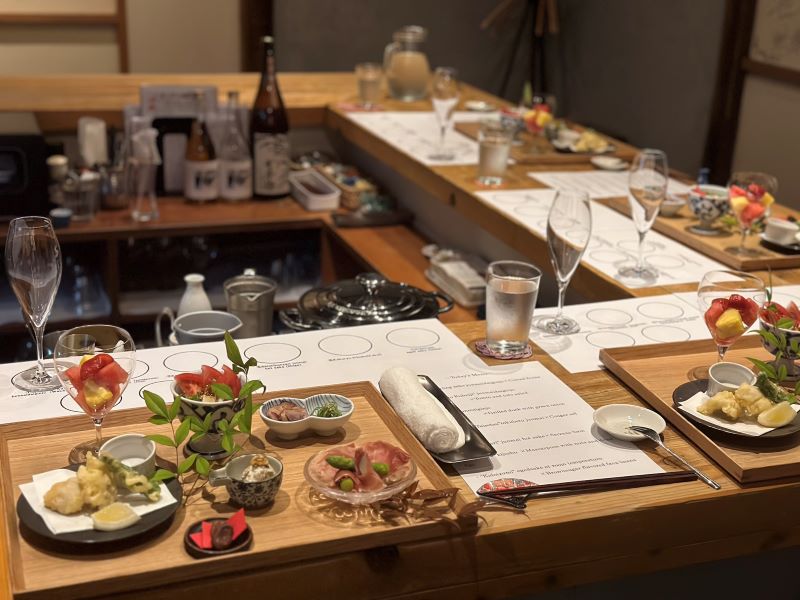
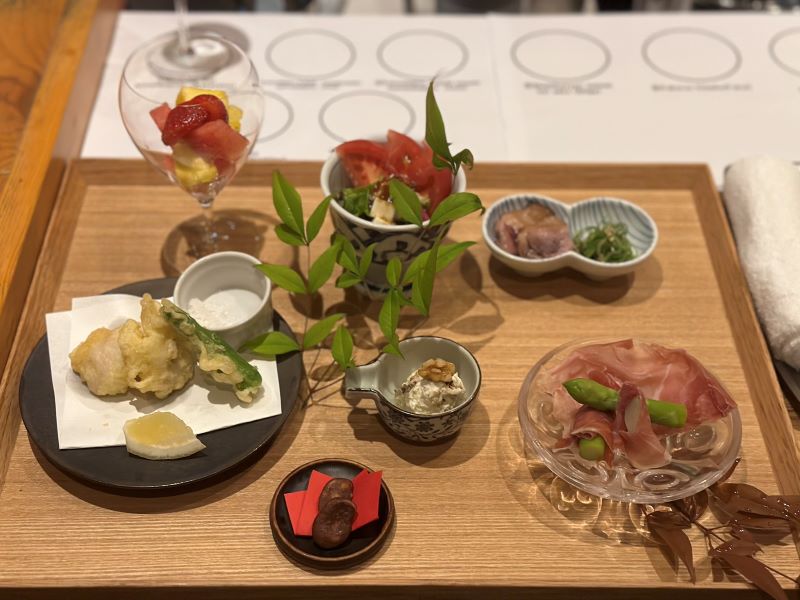
“KID (紀土)” / Junmai Daiginjo – Sparkling Sake
The first commemorative drink was a sparkling junmai daiginjo sake called “KID” from Heiwa Shuzo, a sake brewery in Wakayama Prefecture.
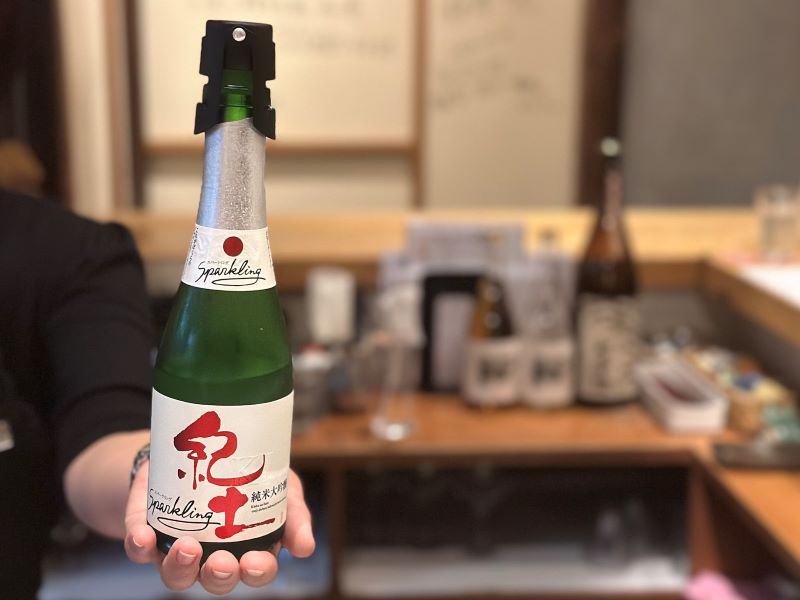
It is a very fruity sake with secondary fermentation in the bottle. I was told that it goes well with something with a similar atmosphere, so this time I served it with fruit. Sake and fruit? I was surprised to learn that sake and fruit go well together because they are sparkling, refreshing, and have a good amount of sweetness.
Even if you are not a sake drinker, I think you can drink this. It is rather a dangerous sake that you can gobble up.
This one is also said to go well with cured ham melon, etc! The bottle looks like a champagne bottle and would make a great celebratory gift or present.
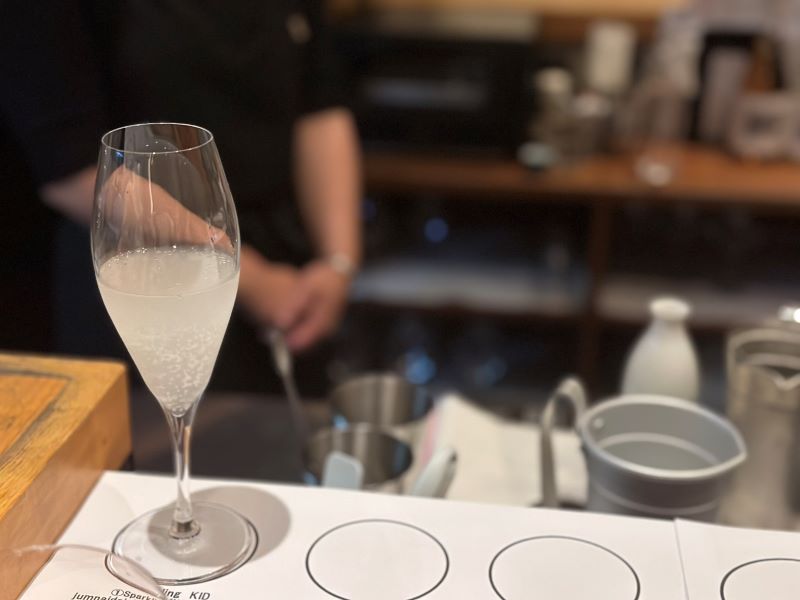
“Kamoshibito Kuheiji” / Junmai Daiginjo
Next up was “Kamoshibito Kuheiji” from Banjo Jozo in Aichi Prefecture. It is a fire-aged junmai daiginjo. The rice polishing ratio and brewing method are all the same, but only the rice variety differs between the two types of sake.
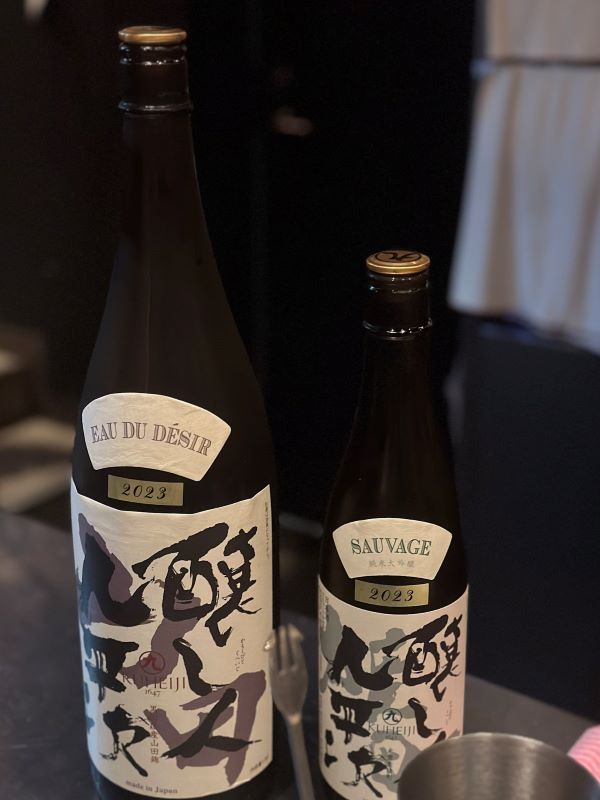
We started with “EAU DU DÉSIR” made with Yamada Nishiki. Yamada-Nishiki is the most popular rice used for sake brewing in Japan.
EAU DU DÉSIR means “water of hope. I want to make sake even more “happy”. This product is made with the wish to make Japanese sake more “happy”.
It was easy to drink, even for someone like me who is not accustomed to sake, and was a refreshing yet elegant sake.
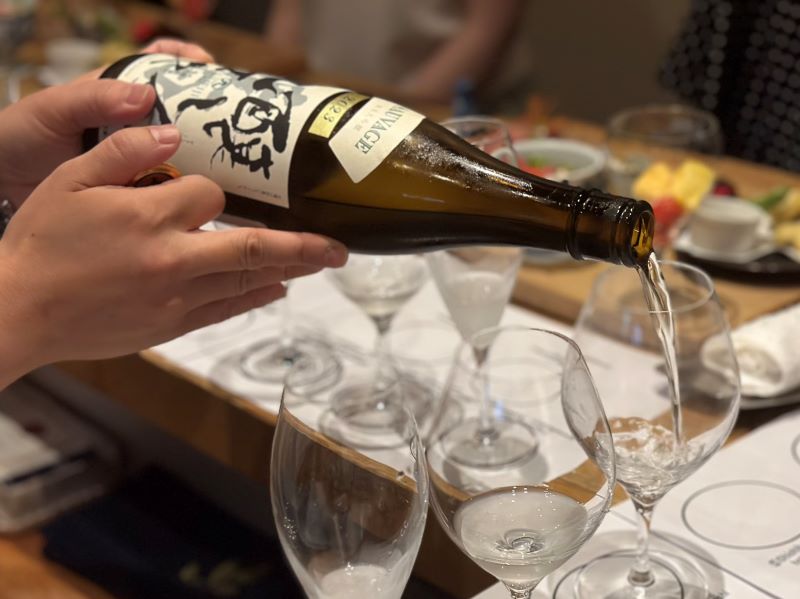
Next is “SAUVAGE” made with “OMACHI” rice, which means “wild taste.
Omachi is the fourth most commonly used variety in sake brewing, but it is one of the oldest varieties in Japan that we can experience. It is a variety that is descended from the native blood of Japanese rice and is not an exaggeration to say that it is a wild rice.
The aroma and taste are a bit stronger than those of Yamadanishiki, and as a sake beginner, I am not ready for it yet! However, I heard that Omachi is a very popular rice among sake lovers.
The “Kamoshiibto Kuheiji,” which both have a clean aftertaste, was served with tomato and tofu salad.
I was shocked to see how different rice varieties can make such a difference, even though the process and ingredients are the same. I have a small ambition to order sake by rice variety when I become a little more familiar with sake and have a taste for it.
“Sharaku” / Junmai Ginjo
Next is “Sharaku” Junmai Ginjo from Miyazumi Meijo in Fukushima Prefecture. The rice polishing ratio is 50%, which meets the criteria to be called a daiginjo, but the sake brewery insists on calling it a “ginjo”.
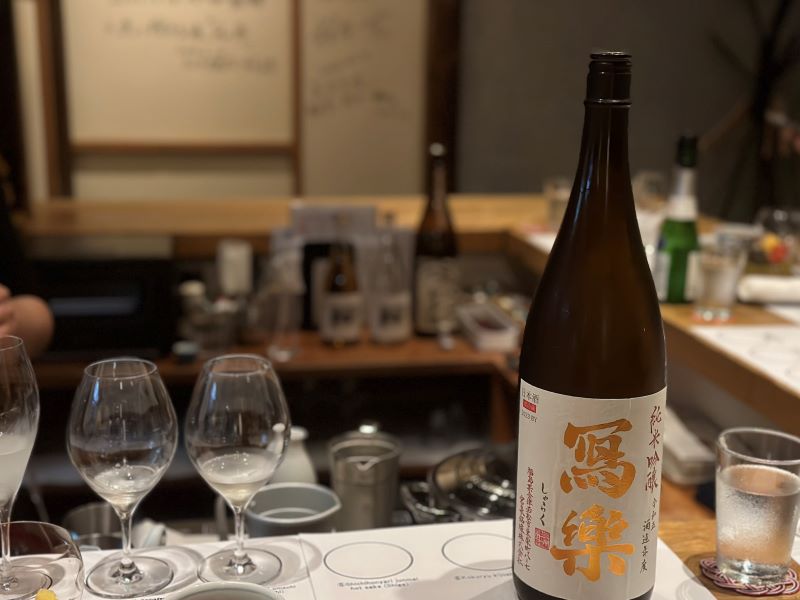
The master explained to us that “almost no one is bad at Sharaku.” and I found that it was really fresh and refreshing, yet sweet. This indeed would be a sake for everyone.
With roasted duck. We were told that it goes well with refreshing meat dishes.
“Kamikawa Taisetsu” / Tokubetsu Junmai – Ginpu, Dry
Followed by a clean, dry sake from the Kamikawa Taisetsu Shuzo brewery in Hokkaido.
I was also surprised to learn that they make sake in Hokkaido, as I did not have much of an image of sake in Hokkaido. Kamikawa Taisetsu Sake Brewery is located at the foot of the Daisetsu Mountains in Hokkaido and was newly established in 2016.
It is a dry sake with a strong rice flavor and a crisp impression, and we served it with hamo tempura as a side dish. I had it with hamo tempura as a side dish. The light and dry sake cut through the oil in the tempura.
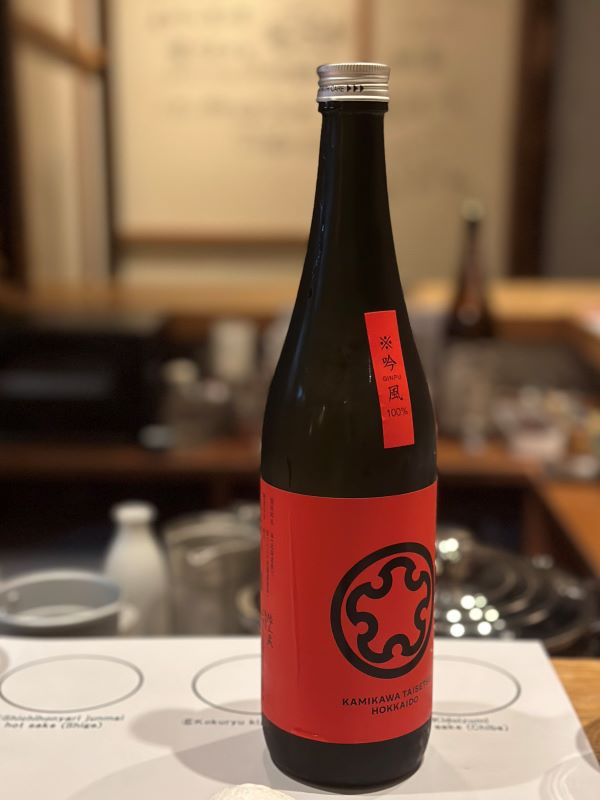
“Shichihon-yari” / Junmai
The sixth glass was a hot sake of Shichihon-yari from the Tomita Shuzo brewery in Shiga Prefecture.
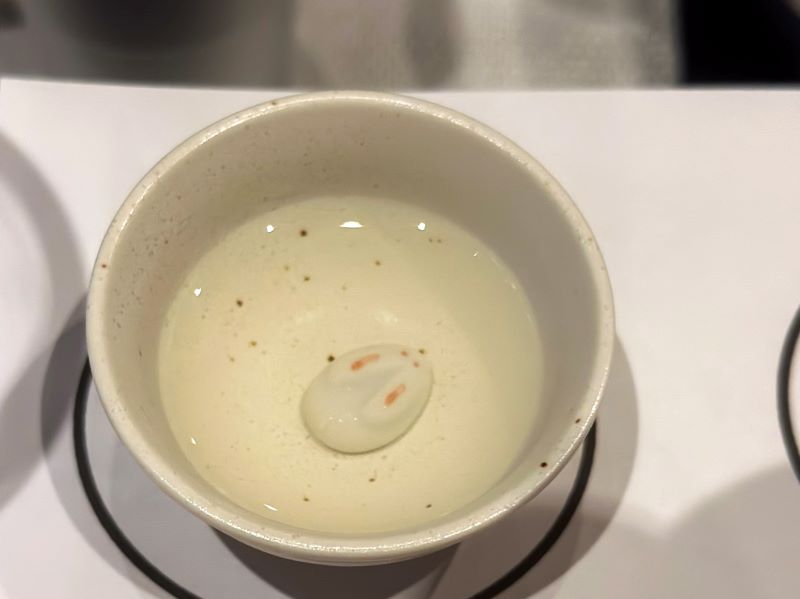
Actually, I don’t like hot sake. Sometimes I can drink cold sake refreshingly, but the smell of hot sake is not my favorite….
This sake overturned that image. It had none of the characteristic hot sake smell, was gentle on the palate, and was not overly rich in flavor. I was surprised at how much I wanted to drink it! I was surprised at how much I wanted to drink it.
The finger food was a cured ham wrapped in asparagus. I had always thought of hot sake as a more Japanese-style drink that goes well with Japanese food, but I was shocked at how well it went with the cured ham! Cured ham is usually served cold, so the warmth of the hot sake melts the oil from the ham.
“Kokuryu” / Kijo-shu
The seventh cup was “Kokuryu,” a noble brew of sake from the Kokuryu Shuzo brewery in Fukui Prefecture.
Kijoshu is a special sake made with sake as part or all of the brewing water. It is a sweet, rich sake with a much higher sugar content than regular sake. It is said to be like dessert wine. This one is made with a luxurious amount of Junmai Ginjo sake, Kokuryu.
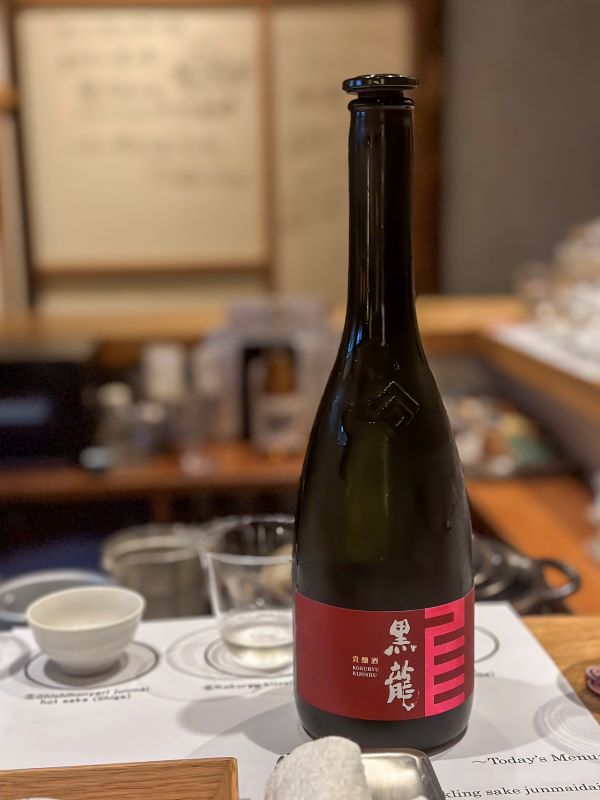
The sweetness blows up in your mouth and I could see why you said it felt like a dessert wine. If you like sweet cocktails, you will like this one too. It was served with mascarpone cheese.
“Kido Izumi” / Brended Koshu – Handshake
The last sake we were served was Kidoizumi, a blended old sake from Chiba Prefecture’s Kidoizumi Shuzo, made with a base of junmai sake aged at least one year, blended with junmai genshu aged at least 30 years and junmai ahus aged over five years.
The color of this aged sake was very different from the ones I have had in the past. I had an image of sake as a clear color, or a transparent color with a slight yellowish tinge, but the color was darker! I was so surprised that I thought, “Vinegar?” I was surprised to find it to be vinegar.
It was like Shaoxing wine, it was too early for me… But I’m sure there are a lot of people who would like this! I guess there are a lot of people who like it. This one was served with brown sugar glazed sole. I think the sweetness of the brown sugar made it a little easier to drink.
The bottle design is nice and uses a photo of the current toji and the toji of the previous generation shaking hands. It shows the spirit of cherishing the past and the present.
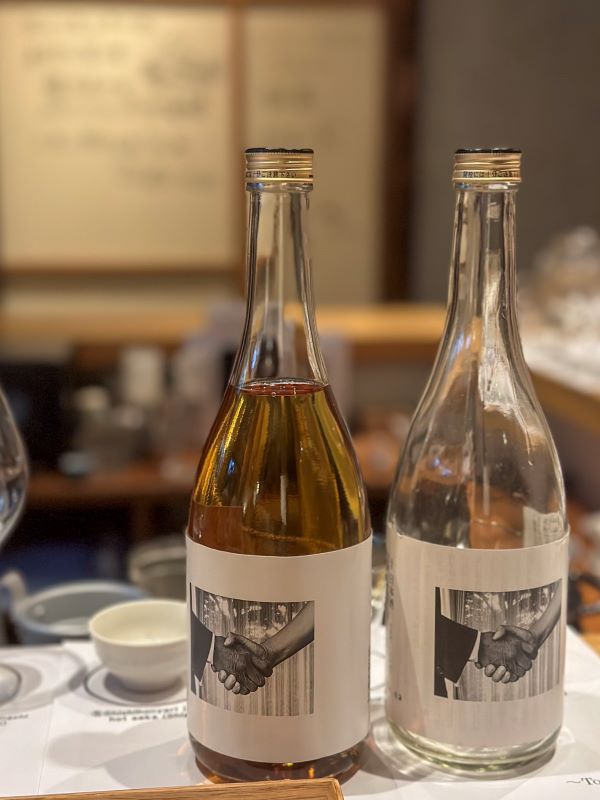
The lecturers gave us detailed lectures on such topics as pairing snacks that go well with the character of sake, types of sake, sake rice, and the particulars of sake breweries, which is difficult to ask about when simply having sake at an izakaya or restaurant, and I felt my previously limited interest in sake awakened.
Since it’s private, don’t be afraid to ask, “What’s the difference between daiginjo and ginjo?” Is vintage sake as valuable as wine?” I like the fact that I can learn about sake according to my own level of knowledge.
This session is specially prepared for our customers and is not usually held, but “SAKE BAR Otonari” always has more than 40 kinds of sake available. Why don’t you try to find the sake that suits you best with delicious snacks?
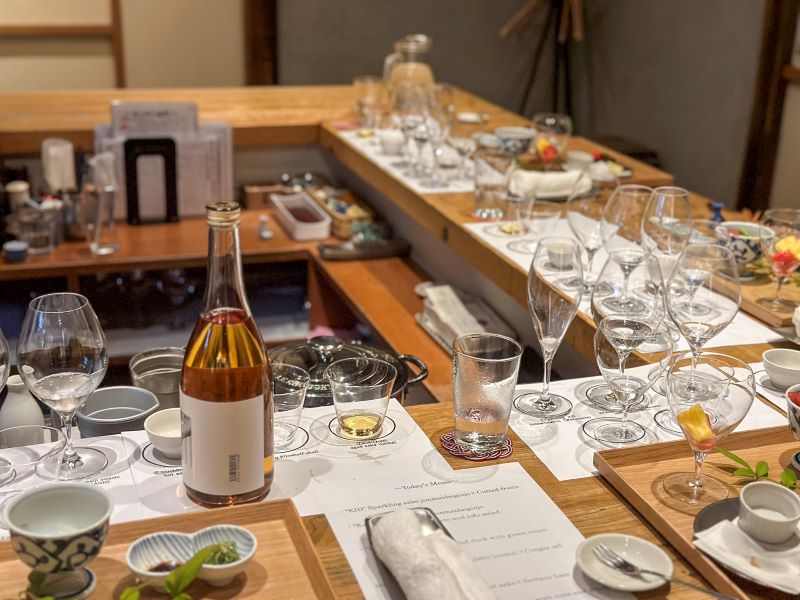
SAKE BAR Otonari
| Address | Otori Bldg. B1F , 5-35 Kagurazaka, Shinjuku-ku, TOKYO |
| TEL | +81-80-7954-5357 |
| Open Hour | 【Weekdays】 17:00-23:00 【Weekends & Holiday】 15:00-23:00 |
| Close | Yearend & New Year |
| Website | https://tabelog.com/tokyo/A1309/A130905/13196674/ (Japanese ONLY) |
